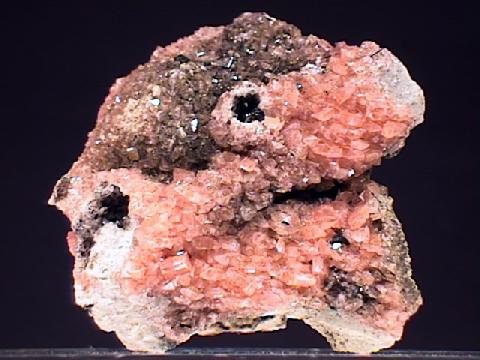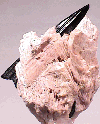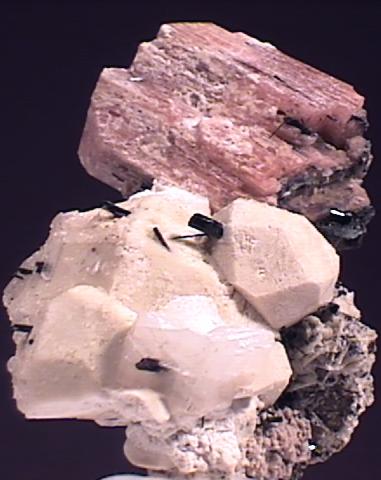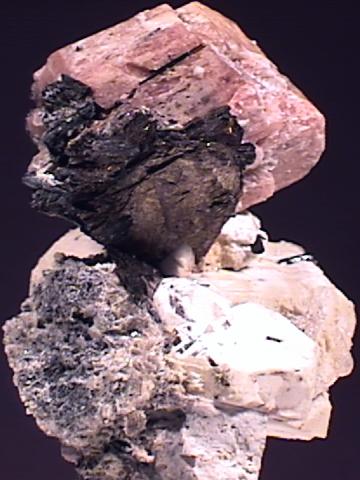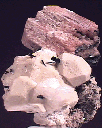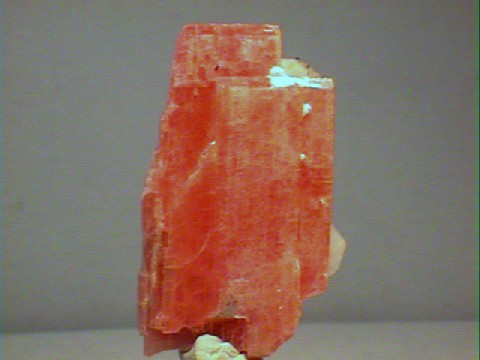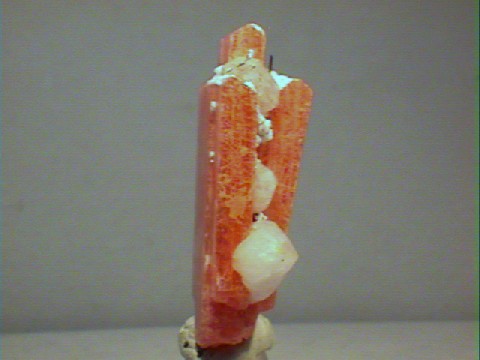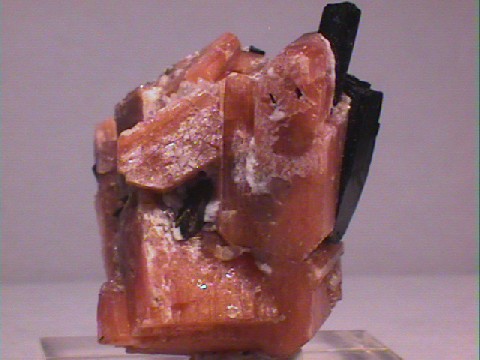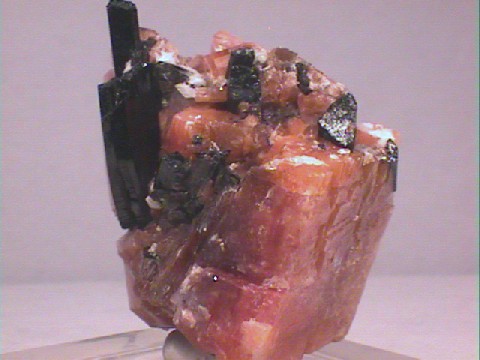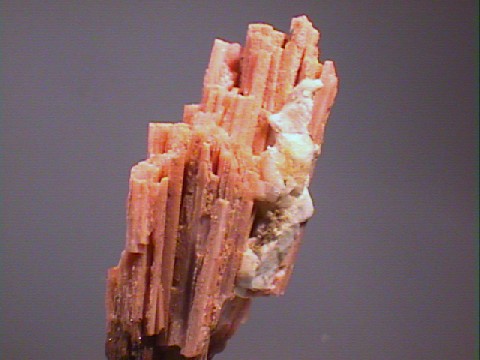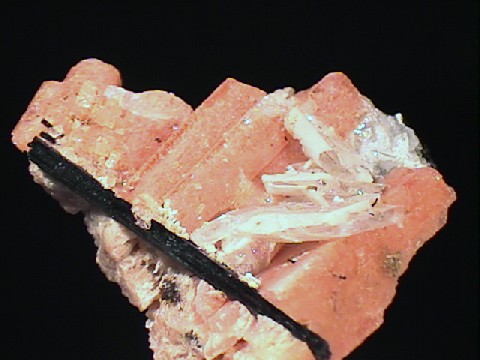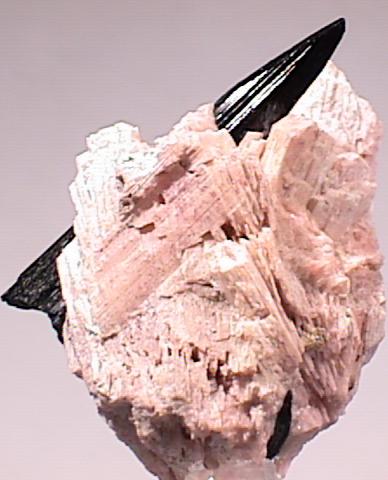
SERANDITE
Specimen srd-2
$ 65.00
Dims: 1.6 x 1.2 x 1.0" (4.1 x 3.0 x 2.5 cm)
Wt: 27.9 g w/ base
Mount Saint Hilaire, Quebec, Canada
This specimen consists of a base of crystalline Serandite in which is partly embedded a single Aegirine crystal. The Serandite crystals that make up the base are heavily intergrown, and many of them are damaged. However, there are still many present that are in excellent condition and show impressively good and well-defined triclinic crystals with shallow pinacoidal termaitions. Their edges are well-defined and their termination faces are clean, possessing a pearly luster. Their prism faces are a bit disjointed, and tend to have a dull waxy luster. All have a pale pink coloration and are essentially opaque. None of these crystals exceecds 0.5" (1.3 cm) in length or 0.3" (8 mm) in either of the other dimensions. The aegirine crystal that they hold is 1.5" (3.8 cm) in length and in excellent condition. There is a visible crack running across the crystal, but it has not been broken. It has excellent monoclinic prismatic form, and is essentially black in color and pearly-to-vitreous in luster. The specimen is hot-glued onto a flat, square acrylic base.

